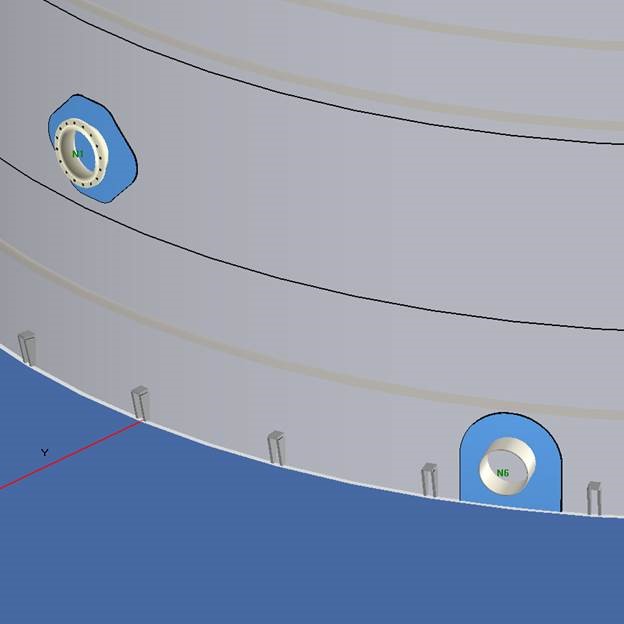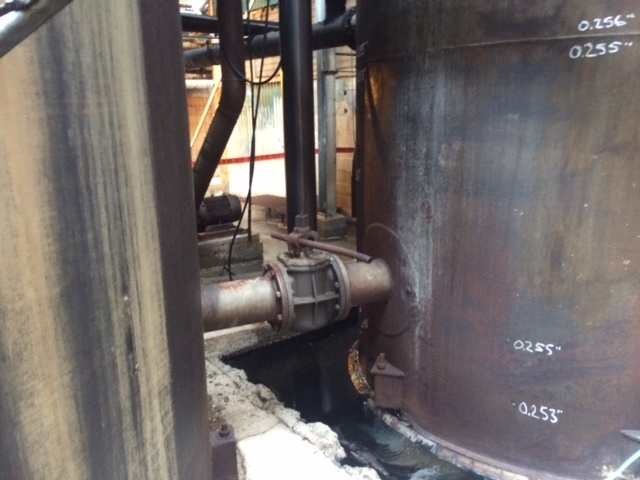Everything About Welding Evaluation: Trick Benefits for Your Jobs
Welding inspection plays a vital duty in the building and construction and production sectors. It guarantees that welded joints fulfill quality and security requirements. By recognizing problems early, tasks can stay clear of financial losses and substantial hold-ups. Adhering to market guidelines not only safeguards the honesty of the end product however also develops trust fund among stakeholders. Understanding the subtleties of this process reveals fringe benefits that can affect job outcomes substantially. What are these benefits?
Comprehending the Welding Inspection Refine
Welding is a critical part in different industries, the evaluation process is important to assure high quality and safety and security. This process involves a collection of methodical examinations designed to identify any type of potential problems that might jeopardize the honesty of welded joints. Examiners evaluate welding procedures and certifications to validate compliance with sector standards.
Following this, aesthetic assessments are conducted to assess the general look and surface of welds. Non-destructive testing techniques, such as radiographic or ultrasonic screening, might additionally be used to spot inner flaws without harming the material. Documentation plays a vital duty, as it gives a record of evaluations and searchings for, verifying traceability and accountability.
Eventually, understanding the welding inspection process promotes self-confidence in the top quality of the finished item, reduces the danger of failings, and enhances total project success in different applications, from building to production. API 650 Welding Inspection.
Common Kinds Of Welding Flaws
Welding flaws can considerably influence the stability and performance of welded structures, as they might cause failings under stress and anxiety or damaging conditions. Typical kinds of welding defects consist of splits, porosity, incomplete fusion, and slag incorporation. Fractures can form due to thermal stresses or inappropriate air conditioning, compromising the joint's toughness. Porosity describes the presence of gas bubbles caught in the weld, which can compromise the joint and minimize ductility. Incomplete fusion happens when the weld steel does not effectively bond with the base product, leading to weak spots. Slag inclusion takes place when non-metallic contaminations come to be trapped within the weld, causing a reduction in structural honesty. Identifying these flaws early through assessment is necessary for maintaining top quality and guaranteeing security in bonded frameworks. Recognizing these typical defects enables improved welding techniques and enhanced task outcomes.
Value of Compliance With Market Standards
Compliance with industry standards is important for keeping architectural stability in welding projects. Complying with these requirements not only minimizes responsibility risks yet additionally improves the overall top quality of the ended up work. This alignment cultivates trust fund among stakeholders and assurances that forecasts fulfill both safety and efficiency expectations.
Ensuring Architectural Integrity
Guaranteeing architectural integrity is extremely important in any type of building and construction or manufacturing project, as adherence to market standards offers as a structure for safety and integrity. Conformity with these criteria warranties that welding processes satisfy extensive specs, which is important for the resilience of structures. Normal welding examinations confirm that techniques and materials straighten with developed standards, avoiding potential failures that might compromise stability. Additionally, adhering to sector criteria promotes uniformity in top quality, which is crucial for keeping public rely on construction techniques. By focusing on architectural integrity with attentive adherence to criteria, organizations can boost the general performance of their jobs, resulting in more secure atmospheres and extended property life expectancies. Eventually, this dedication shows an aggressive approach to quality control in welding practices.
Minimizing Responsibility Dangers
Following market criteria substantially reduces liability risks related to welding tasks. Compliance with developed standards warranties that welds satisfy security and performance standards, reducing the probability of failings that might cause crashes or lawsuits. This aggressive method not just protects the workforce but additionally safeguards the financial rate of interests of the business. Inadequate inspections or ineffective techniques can cause pricey repair services, legal conflicts, and damage to online reputation. By implementing strenuous welding assessments, firms show their commitment to high quality and security, eventually lessening direct exposure to potential claims. On top of that, adherence to policies strengthens count on among stakeholders and customers, as it shows a devotion to keeping high standards throughout the task lifecycle. Minimizing obligation dangers is important for lasting service sustainability.
Enhancing Project Quality
Strenuous welding assessments not only minimize liability threats yet likewise play a pivotal function in enhancing total project top quality. By adhering to market requirements, these inspections assure that welds meet defined standards for sturdiness, safety, and stamina. Compliance with developed standards assists recognize problems early, minimizing the possibility of expensive rework or job hold-ups. Additionally, regular top quality control promotes depend on among stakeholders, including clients and regulatory bodies, which can lead to repeat service and favorable referrals. Ultimately, a commitment to top notch welding methods not just enhances the stability of the last item but also supports the track record of the organization involved. As a result, extensive inspections function as a foundation for successful and sustainable task outcomes.
Advantages of Very Early Detection of Issues
Early detection of welding issues uses considerable advantages, specifically regarding price savings on repair services. By identifying troubles before they rise, organizations can enhance the structural honesty of their jobs. This positive strategy not just minimizes financial expenses yet also promotes safety and dependability in welded frameworks.
Expense Savings on Fixes
Detecting welding issues without delay can result in significant expense financial savings on repairs. Early identification of problems permits targeted treatments, lessening the level of damage and stopping pricey, comprehensive repair work later on. When troubles are attended to throughout the preliminary stages of a task, sources are used extra effectively, reducing both labor and product costs. Additionally, prompt examinations can prevent job delays, which usually incur added costs. By remedying problems early, firms can stay clear of the financial problem related to rework, guarantee cases, and possible safety and security threats. Eventually, buying proactive welding inspections promotes an extra cost-efficient strategy to job administration, making sure that spending plans remain intact while preserving the quality and integrity of the final product.
Improved Structural Stability
Guaranteeing the structural honesty of welded parts depends upon the prompt recognition of prospective concerns. Early discovery during the welding assessment process enables for the immediate correction of defects such as fractures, gaps, or improper combination. Resolving these problems promptly not only improves the stamina and toughness of the weld however additionally minimizes the threat of devastating failings throughout the service life of the framework. Routine examinations add to a more trusted analysis of weld top quality, ensuring compliance with sector standards. By prioritizing welding inspections, job managers can maintain a higher degree of safety and security and efficiency, eventually leading to effective image source project outcomes. Enhanced architectural honesty mirrors the commitment to high quality and adherence to ideal methods in welding.
Cost-Effectiveness of Welding Inspections
While numerous business might view welding examinations as an added expense, they often confirm to be an affordable financial investment over time. By identifying problems early, these examinations can protect against expensive repair work or substitutes that may develop from undetected concerns. This positive technique not just saves money but also reduces task hold-ups, ensuring that timelines are stuck to.

In addition, high-quality welding inspections contribute to boosted efficiency, bring about fewer rework circumstances and improved performance. The reduction in product waste and labor prices connected with redesigning malfunctioning welds contributes to the monetary benefits.
Spending in complete assessments additionally enhances the overall quality of the final item, which can bring about enhanced client satisfaction and repeat service. Eventually, the initial prices linked with welding assessments are often surpassed by the long-term cost savings and benefits they supply, making them a smart choice for any type of welding job.
Enhancing Safety And Security and Reliability in Welding Projects

Welding assessments play an essential role in enhancing security and dependability within welding tasks, as they methodically determine prospective risks and weak points in welds. By employing qualified assessors, companies can assure that welding procedures follow market requirements and regulative demands. This proactive strategy decreases the danger of weld failures, which can bring about mishaps, expensive repair work, and project hold-ups.
Additionally, examinations give essential paperwork More hints that verifies conformity and high quality guarantee, cultivating count on in between stakeholders. Routine evaluations throughout numerous task phases permit the prompt discovery of issues, enabling rehabilitative activities before they intensify. Additionally, the understandings acquired from inspections add to constant improvement in welding practices, improving overall project end results. Eventually, robust welding examination procedures not just shield workers yet additionally protect investments, assuring that jobs are completed efficiently and meet the greatest safety and security and integrity standards.
Often Asked Questions
What Qualifications Should a Welding Inspector Have?
A welding assessor need to possess relevant certifications, such as Licensed Welding Assessor (CWI), in addition to substantial knowledge of welding processes, codes, and materials. API 650 Welding Inspection. Experience in the field and strong logical skills are likewise vital for efficient evaluations
Just How Typically Should Welding Inspections Be Performed?
Welding examinations should be performed regularly, usually in the past, during, and after the welding procedure. The frequency may depend upon project requirements, regulative needs, and the intricacy of the welds to ensure architectural integrity and safety.
Can Welding Inspections Be Executed Remotely?
Welding examinations can certainly be performed remotely, making use of innovative modern technologies such as drones, electronic cameras, and ultrasonic screening tools - API 650 Welding Inspection. This strategy permits for efficient surveillance while reducing the need for physical presence at the site
What Devices Are Made Use Of in Welding Inspections?
Welding inspections utilize various tools, consisting of ultrasonic testers, magnetic particle testers, visual evaluation devices, radiographic devices, and calipers. Each device serves a details objective to assure weld integrity, quality, and compliance with market requirements.
Just how Do I Pick a Welding Examination Solution?

To pick a welding examination service, one must review credentials, experience, and qualifications. In addition, evaluating customer endorsements and requesting in-depth solution summaries can help ensure the picked service meets particular project requirements efficiently.
By focusing on welding assessments, task managers can keep a greater level of security and performance, eventually leading to successful job end results. Welding examinations play an important role in boosting safety and security and reliability within welding projects, as they systematically recognize prospective threats this contact form and weaknesses in welds. A welding assessor must have relevant qualifications, such as Qualified Welding Examiner (CWI), along with substantial expertise of welding processes, codes, and materials. Welding examinations should be performed consistently, normally in the past, throughout, and after the welding process. Welding evaluations utilize different tools, consisting of ultrasonic testers, magnetic bit testers, aesthetic assessment devices, radiographic devices, and calipers.